Welcome Dear Photography Lovers
Bienvenidos Queridos Amantes de la Fotografía
Siempre es un gusto estar de vuelta con ustedes queridos amigos amantes de la naturaleza, últimamente no los he podido visitado mucho. Esto se debe a que he tenido bastante trabajo en la vida real y no he podido sentarme con calma a indagar y escribirles sobre el maravilloso mundo natural que me rodea. Pero esta vez le traigo una planta que es toda una joya de la naturaleza, se trata de la popular Guayaba.
It is always a pleasure to be back with you dear nature-loving friends, I have not been able to visit you much lately. This is because I have had enough work in real life and I have not been able to sit down calmly to investigate and write to you about the wonderful natural world that surrounds me. But this time I bring you a plant that is a jewel of nature, it is the popular Guava.
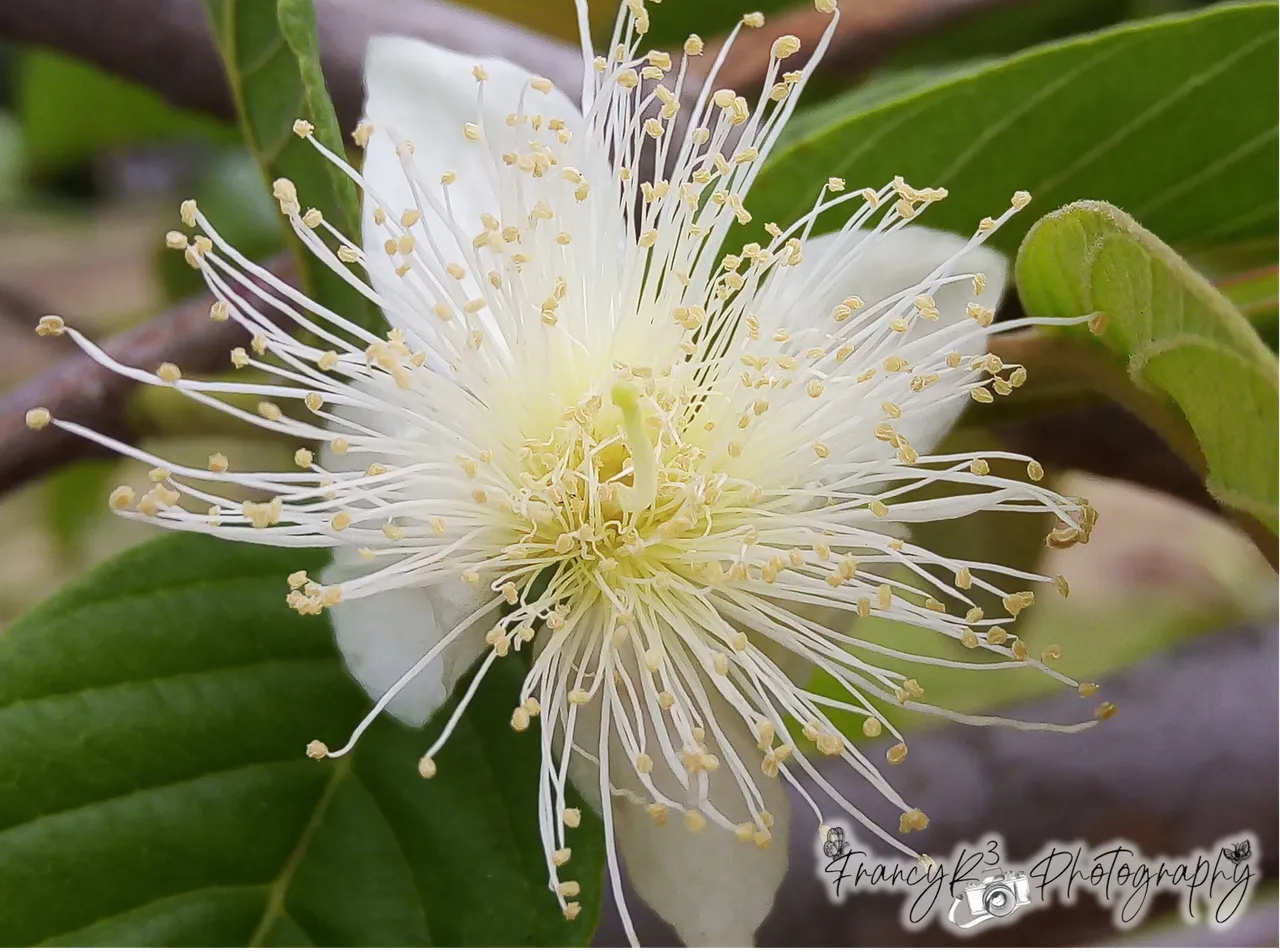

Esta planta tropical originaria de América conocida popularmente como Guayaba y en algunos sitios Guabaya, por otro lado, a nivel botánico es denominada como Psidium Guajava. Este pequeño árbol, pertenece a la familia Myrtaceae y el género que la agrupa es y que consta de más o menos unas cien especies es el Psidium.
This tropical plant native to America is popularly known as Guava and in some places Guabaya, on the other hand, botanically it is called Psidium Guajava. This small tree belongs to the Myrtaceae family and the genus that groups it and consists of about a hundred species is Psidium.

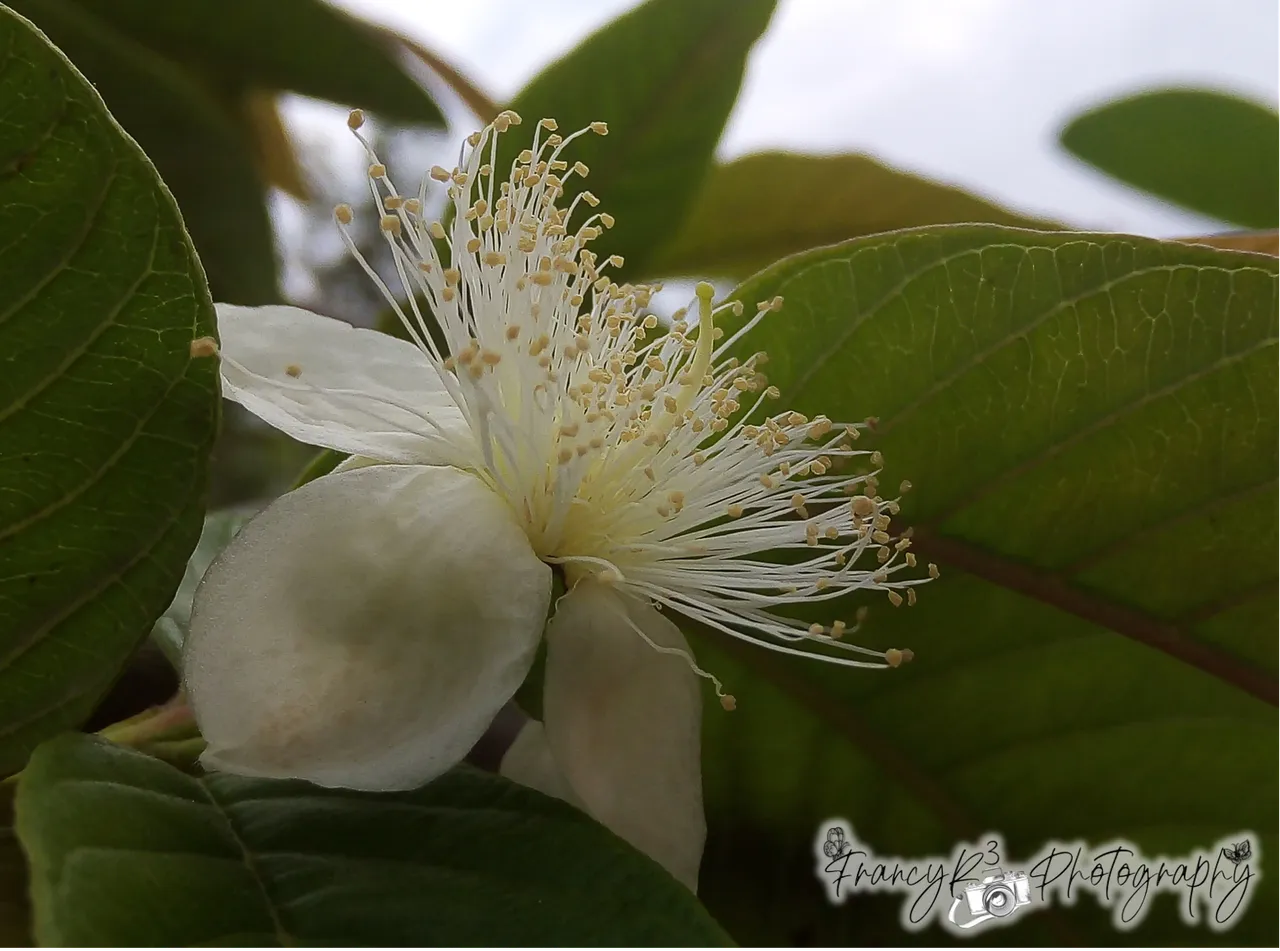

Aunque, lo más popular de esta planta es su fruta, por sus fabulosos aportes nutricionales y usos a nivel gastronómico, de seguro no muchos han detallado su hermosa y delicada flor. Por ello, empezaré hablándoles de esta pequeña flor blanca de cinco pétalos, y que, por cierto, me llamó mucho la atención la gran cantidad estambres que posee y que me recordó un pequeño erizo.
Although, the most popular thing about this plant is its fruit, for its fabulous nutritional contributions and uses at a gastronomic level, surely not many have detailed its beautiful and delicate flower. Therefore, I will begin by telling you about this small white flower with five petals, and that, by the way, I was very struck by the large number of stamens it has and that reminded me of a small hedgehog.

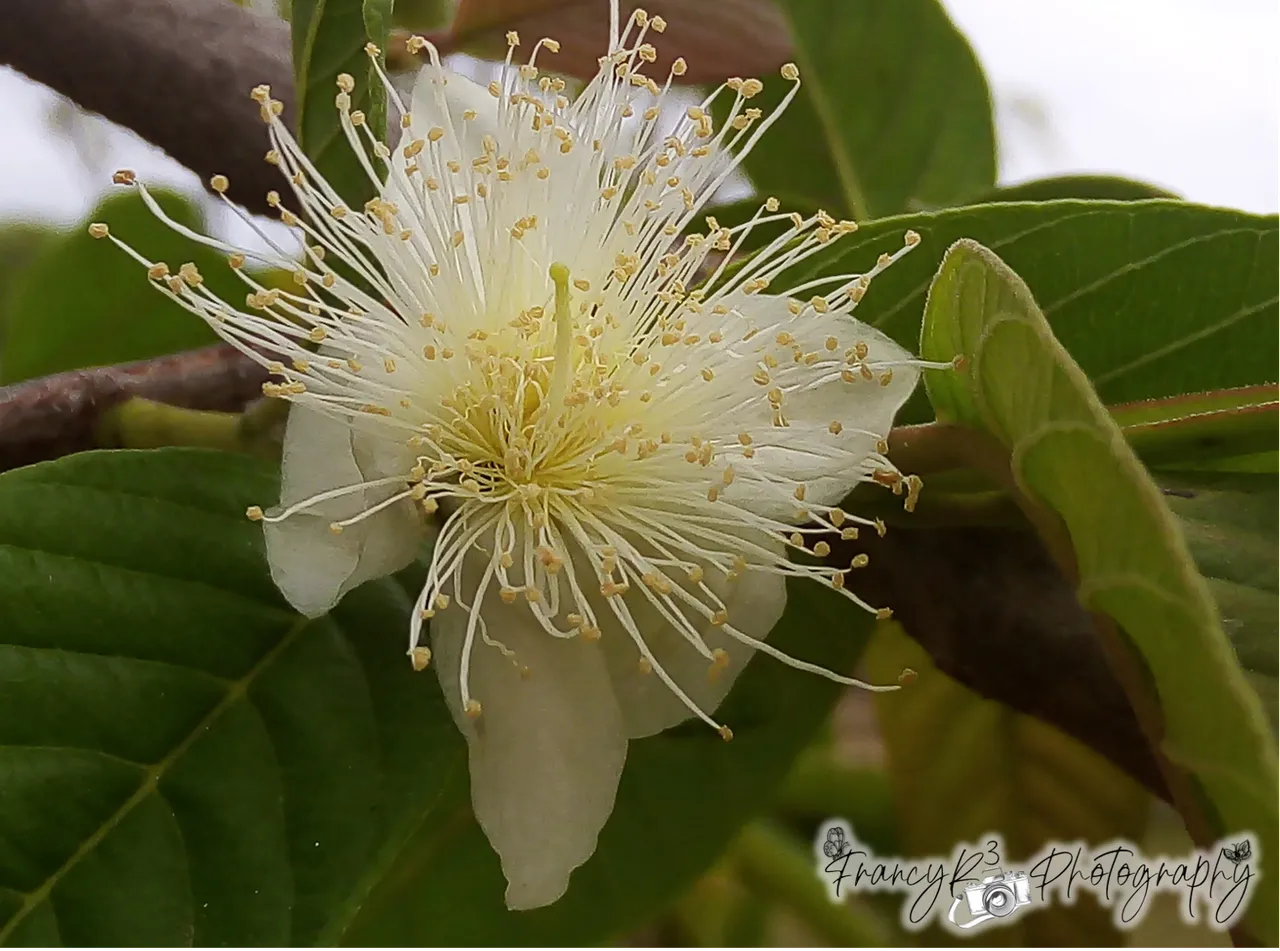

Al investigar sobre esta curiosa flor, descubrí algo muy interesante, resulta, que el agradable y característico aroma que posee la guayaba se lo debe a unas glándulas llamadas oleíferas. Por otro lado, estas inflorescencias se caracterizan por ser hermafroditas y emergen a partir de brotes pudiendo surgir de forma solitaria o en racimos de máximo 3 flores.
While researching about this curious flower, I discovered something very interesting, it turns out, that the pleasant and characteristic aroma that the guava has is due to glands called oleiferae. On the other hand, these inflorescences are characterized by being hermaphrodite and emerge from buds and can arise solitarily or in clusters of up to 3 flowers.

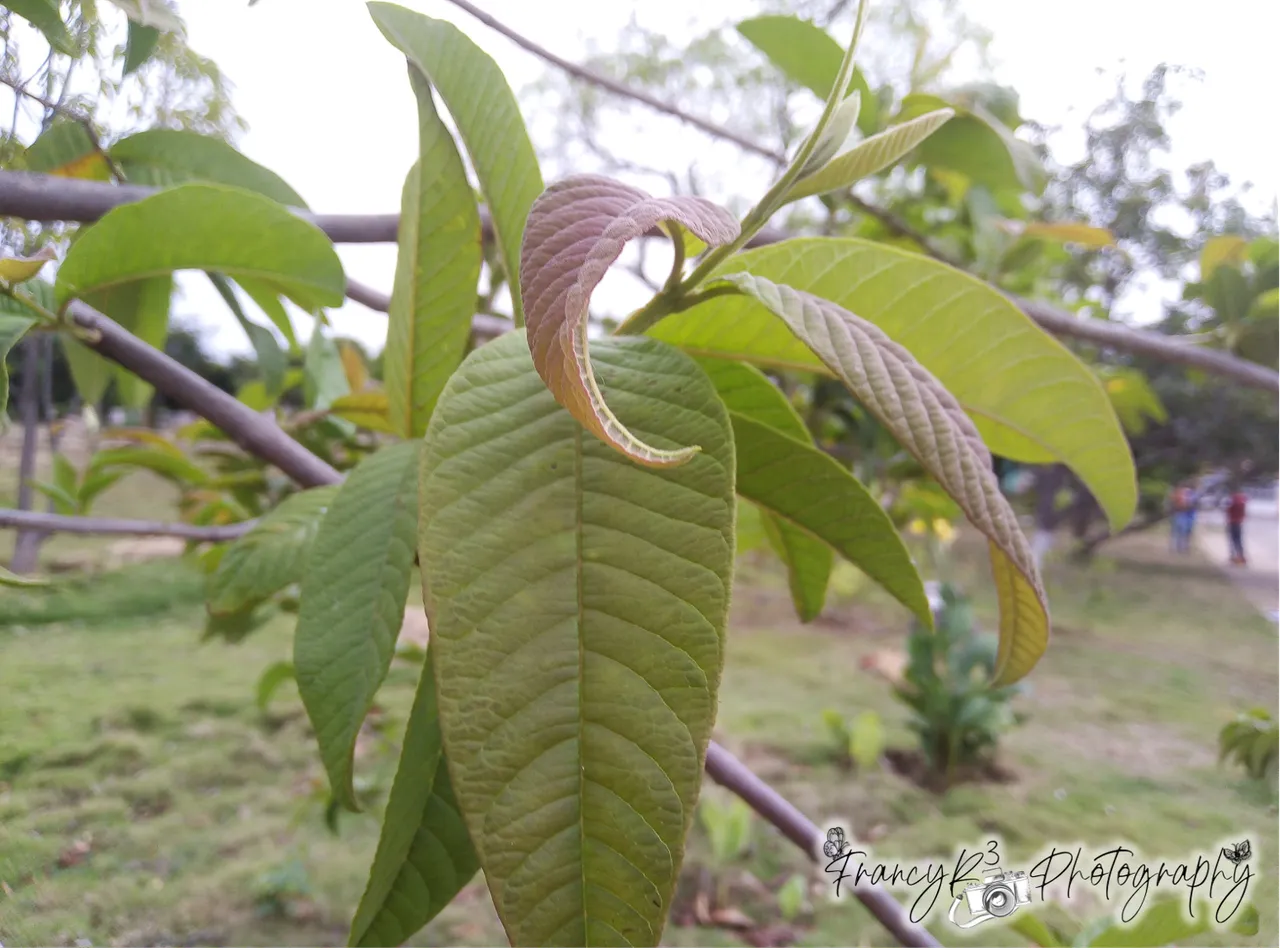

Hablemos ahora un poco sobre el aspecto general de este arbusto perenne, que se caracteriza por ser muy ramificado y que alcanza una altura máxima de 6 metros. Por otro lado, sus hojas en color verde oscuro que alcanzan de largo entre 5 y 15 centímetros y poseen una forma elíptica que tiende a ser ovalada, parecidas a una punta de lanza. Se encuentran dispuestas de forma opuestas una a otra en torno a cada uno de los nudos de las ramas.
Let us now talk a little about the general appearance of this perennial shrub, which is characterized by being very branched and reaching a maximum height of 6 meters. On the other hand, its dark green leaves are between 5 and 15 centimeters long and have an elliptical shape that tends to be oval, similar to a spearhead. They are arranged opposite each other around each of the nodes of the branches.

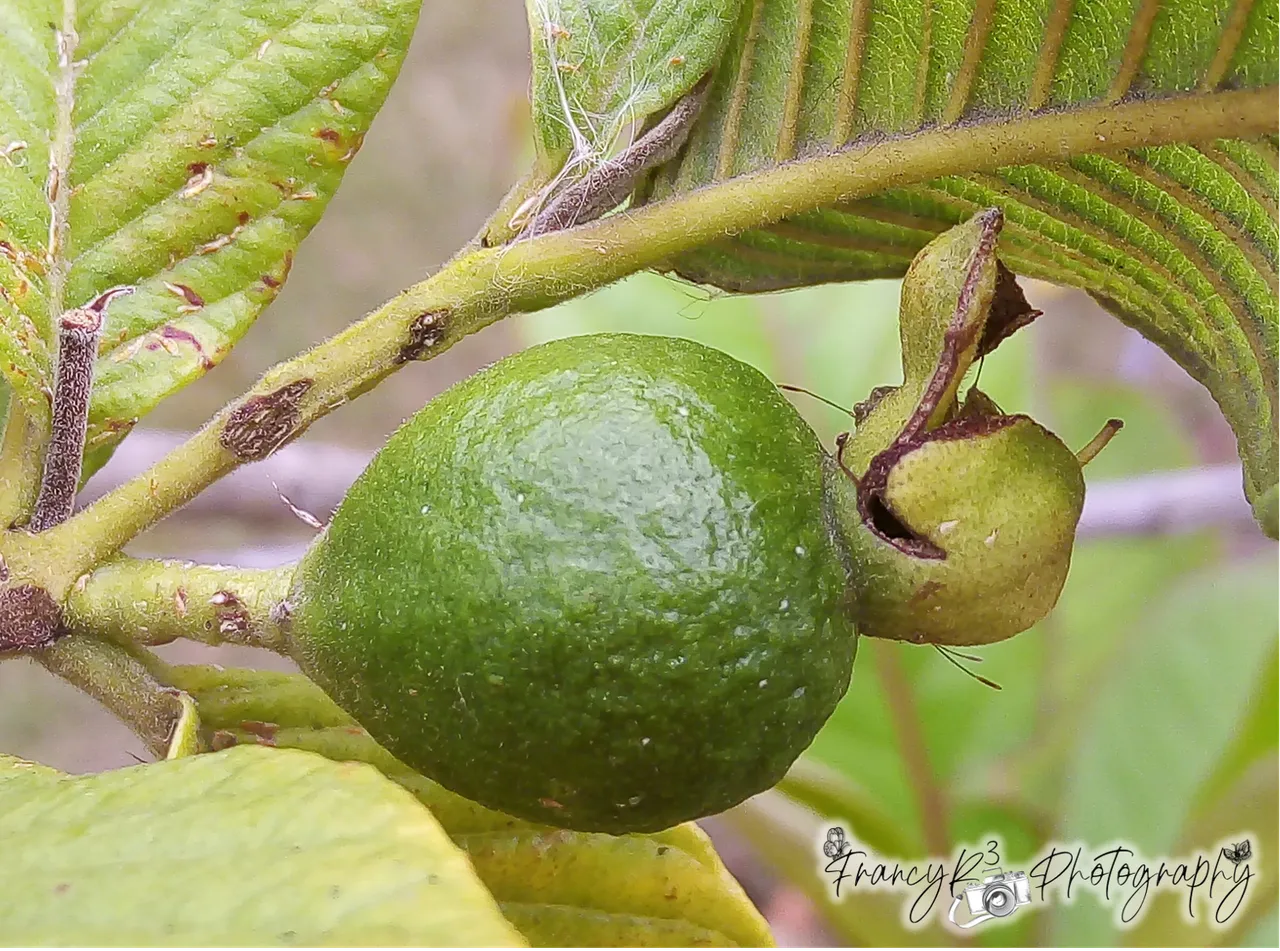

Ahora sí, hablemos de famoso fruto de este arbusto, el cual, no es otra cosa que una baya, su forma es redondeada o también las podemos encontrar similares a las peras. Su tamaño es variable y va desde 3 a 10 cm de diámetro aproximadamente. Posee una concha o corteza muy delgada que en algunos casos es lisa y en otros cerosa. Sabemos que el fruto está maduro porque normalmente la piel se torna de color amarillo. En el caso de la pulpa su color depende de la especie, en algunos casos es rosada, tendiendo a roja, en algunas es de color crema y en otras anaranjadas. Eso sí, todas las especies coinciden en que tienen una gran cantidad de pequeñas semillitas y por supuesto en su rico olor característicos.
Now, let's talk about the famous fruit of this shrub, which is nothing more than a berry, its shape is rounded or we can also find them similar to pears. Its size is variable and ranges from 3 to 10 cm in diameter approximately. It has a very thin shell or rind that in some cases is smooth and in others waxy. We know that the fruit is ripe because the skin usually turns yellow. In the case of the pulp its color depends on the species, in some cases it is pink, tending to red, in some it is cream colored and in others orange. However, all species coincide in that they have a large number of small seeds and of course in its rich characteristic odor.

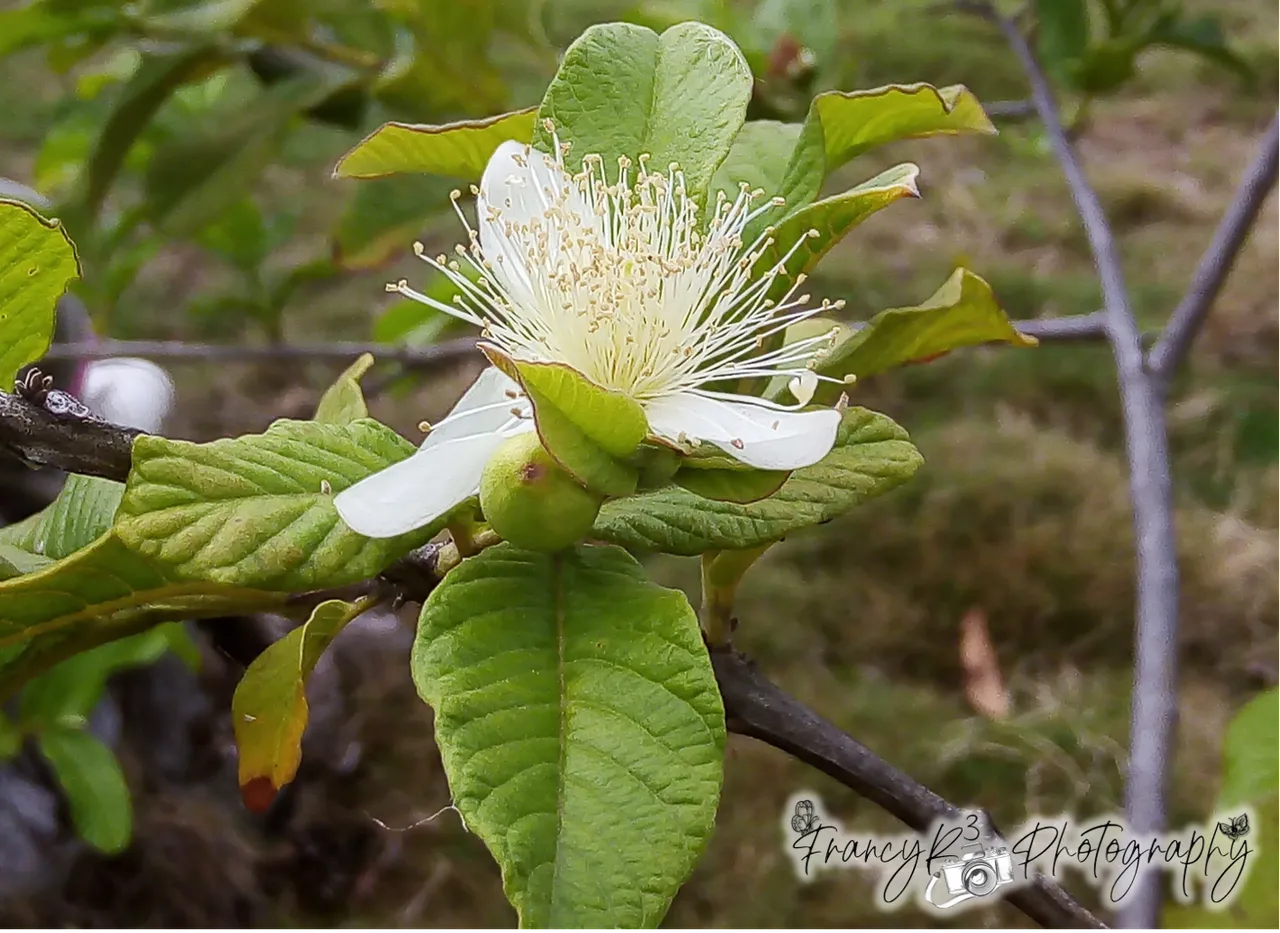

Aquí en Venezuela la guayaba es una fruta muy apreciada no solo por su valor gastronómico sino además por su alto contenido en vitamina C, A y B, e incluso, también posee propiedades antioxidantes. Es una fruta muy versátil, la podemos comer cruda simplemente la picamos en trozos y ya, es deliciosa, pero también la podemos licuar y preparar un rico en batido. De forma cocida con ella se elaboran una variedad de preparaciones como, dulces, mermeladas, jalea, néctares.
Here in Venezuela the guava is a very appreciated fruit not only for its gastronomic value but also for its high content of vitamin C, A and B, and even has antioxidant properties. It is a very versatile fruit, we can eat it raw by simply chopping it into pieces and it is delicious, but we can also blend it and prepare a delicious smoothie. When cooked, it can be used to make a variety of preparations such as candies, jams, jelly, nectars.

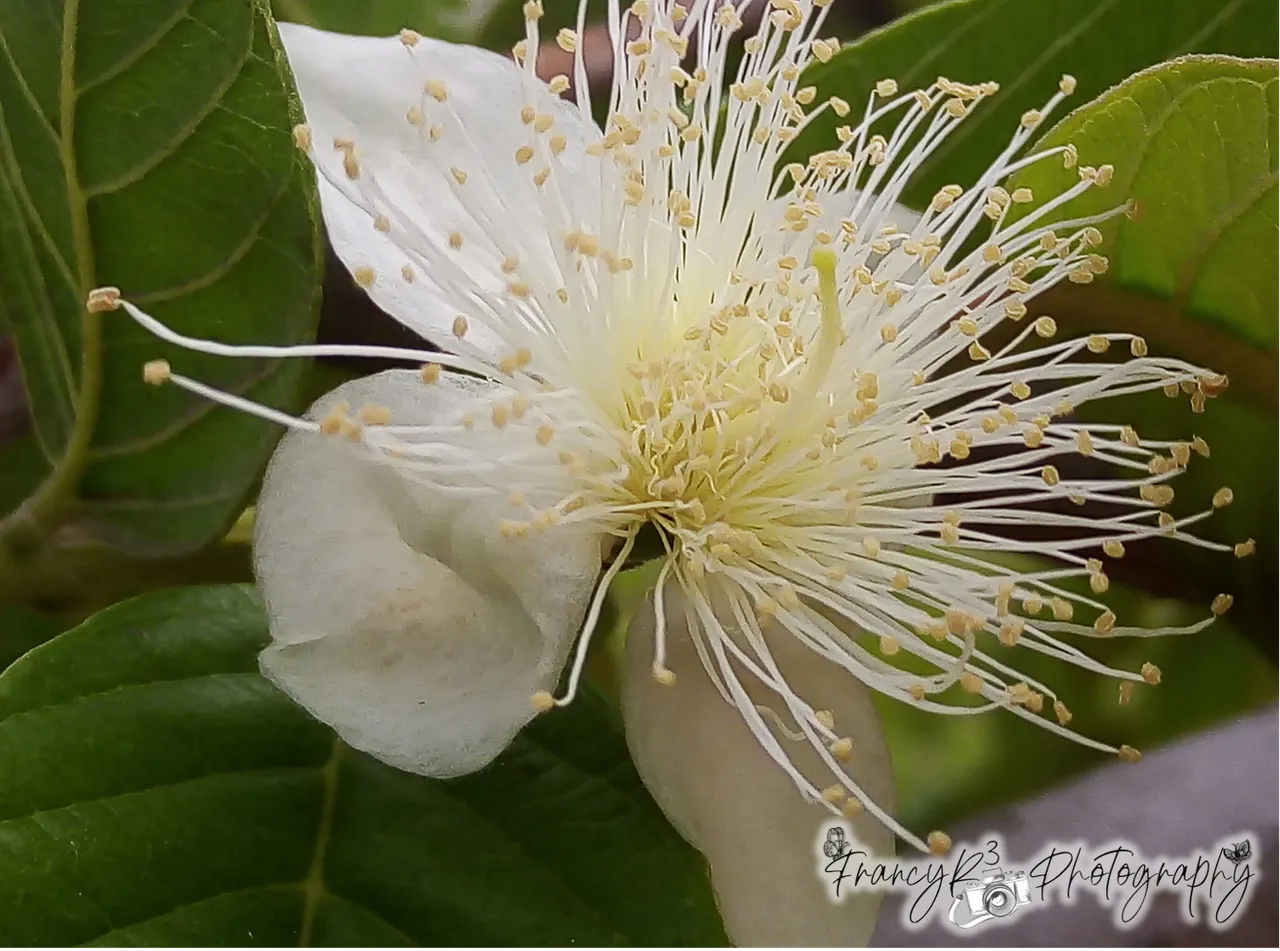

Dos preparaciones que me recuerdan mi niñez son los bocadillos de guayaba, que en esencia es una especie de mermelada, a la cual se le deja secar casi todo el líquido a la mezcla, adquiriendo al enfriar, una textura durita y medio gomosa. Es más, hay un dulce tradicional que, para mí, es una combinación espectacular, se trata de un bocadillo, donde la mitad es de guayaba y la otra mitad del bocadillo es de dulce de leche, ¡es lo máximo! se los aseguro. Bueno, y ni hablar de los panes rellenos de mermelada de guayaba, son deliciosos, realmente es difícil resistirse a ellos, cuando se visita una panadería.
Two preparations that remind me of my childhood are guava sandwiches, which in essence is a kind of jam, which is allowed to dry almost all the liquid in the mixture, acquiring when it cools, a hard and half rubbery texture. Moreover, there is a traditional sweet that, for me, is a spectacular combination, it is a sandwich, where half is guava and the other half of the sandwich is dulce de leche, it is the best! I assure you. Well, not to mention the breads filled with guava jam, they are delicious, it is really hard to resist them when you visit a bakery.

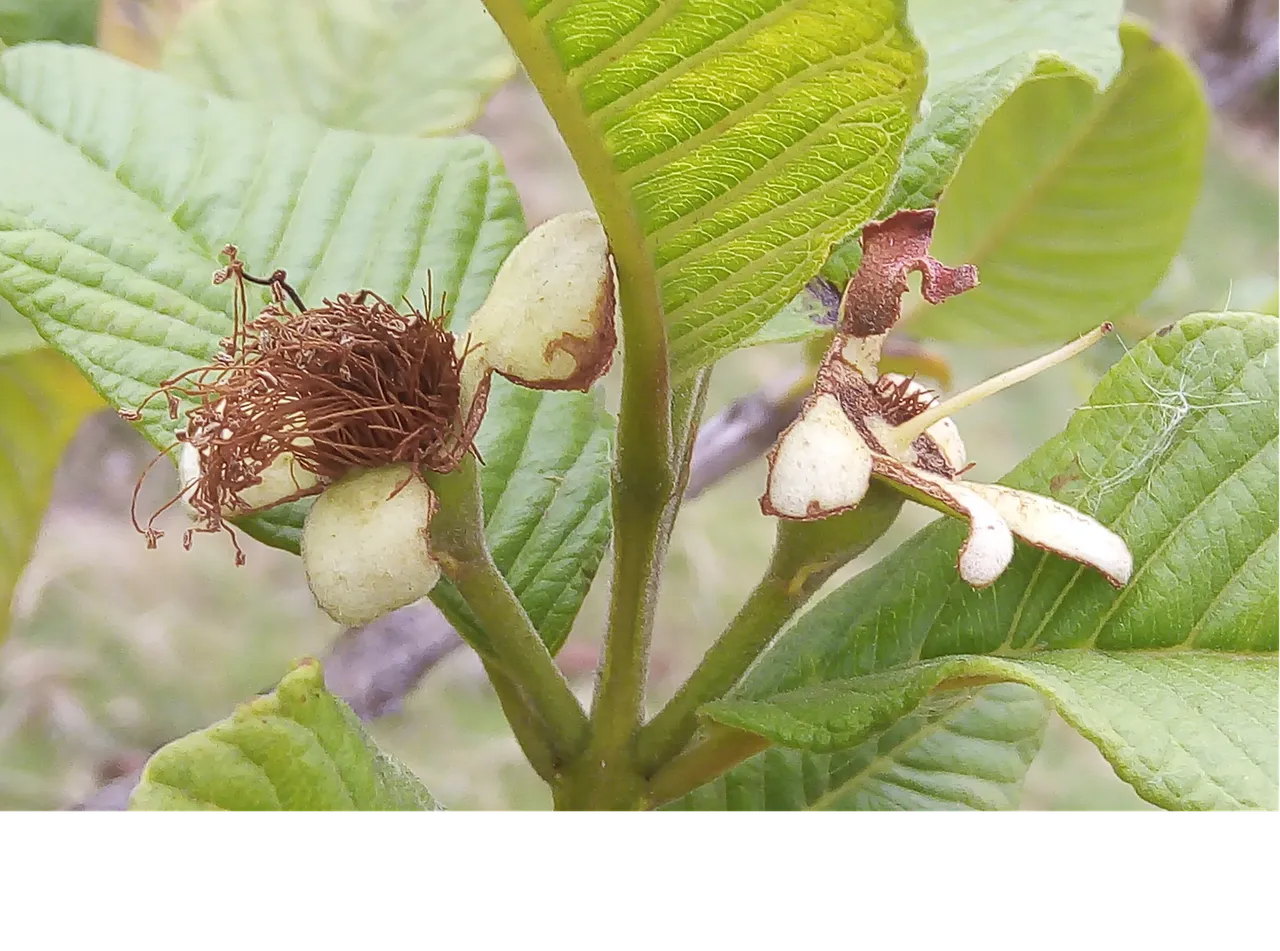

Para cerrar les quería comentar, que no solo la fruta es comestible, las hojas, por ejemplo, tienen propiedades astringentes a nivel intestinal, debido a su alto contenido en tanino. Es por ello, que aquí en Venezuela, es muy común prepararla en cocidos, para detener cuadros diarreicos. Además, también leí, que si se consume con regularidad el cocimiento de la corteza y la raíz ayuda a mejorar la anemia. Bueno, amigos hasta aquí por hoy, espero les gustara la información que les compartí sobre la maravillosa planta de guayaba. Por favor, recuerden cuidarse y cuidar a los suyos, les envío un gran abrazo virtual.
To close I wanted to comment that not only the fruit is edible, the leaves, for example, have astringent properties at intestinal level, due to its high tannin content. That is why here in Venezuela, it is very common to prepare it in stews, to stop diarrhea. In addition, I also read that if it is consumed regularly, the decoction of the bark and root helps to improve anemia. Well, friends, I hope you liked the information I shared with you about the wonderful guava plant. Please remember to take care of yourselves and your loved ones, I send you a big virtual hug.

Bibliographic Reference || Referencia Bibliográfica
https://es.wikipedia.org/wiki/Psidium
https://www.infoagro.com/documentos/el_cultivo_guayaba.asp

Contenido y fotografías de mi propiedad intelectual
Información Técnica
| Cámara | Pentax * istDL |
|---|---|
| Lente | * Pentax 18-55 |
| Iluminación | Luz Natural |
| Locación | Barcelona, Estado Anzoátegui, Venezuela |
Content and photographs of my intellectual property
Technical information
| Camera | Pentax * istDL |
|---|---|
| Lens | * Pentax 18-55 |
| Lighting | Natural Light |
| Location | Barcelona, Anzoátegui State, Venezuela |


